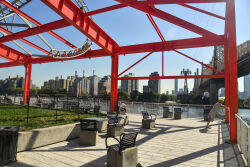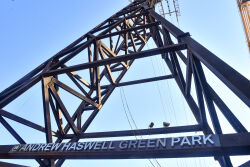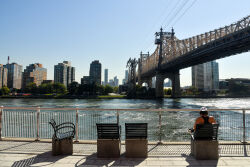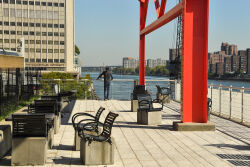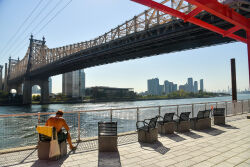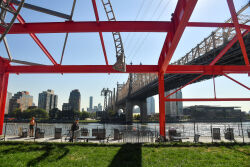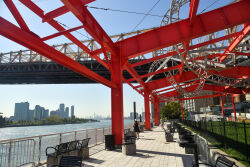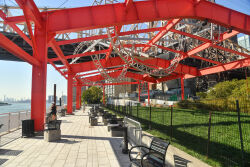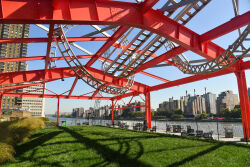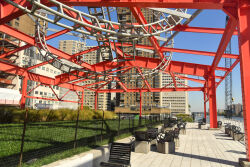Andrew Haswell Green Park
Andrew Haswell Green Park
What was here before?
Farmland in the 1700s, this area attracted affluent New Yorkers who sought to escape the overcrowded conditions of Lower Manhattan. As urbanization crept further uptown, recreational space for the riverside neighborhoods dwindled. During the Great Depression (1929-1939), many struggling homeless families occupied nearby vacant lots. Later, during the construction of the Franklin D. Roosevelt Drive, the City developed the vacant spaces and riverfront property into much-needed park space and riverside promenades.
How did this site become a park?
During the 1980s, Lenox Hill had the highest neighborhood population density in Manhattan and the lowest proportion of parkland in the City, and community groups lobbied for the creation of a new park. A Department of Sanitation waste transfer station at East 60th Street was relinquished to NYC Parks in 1985, which began upgrading the site.
With funding from New York Hospital, Rockefeller University, and the Hospital for Special Surgery as part of their obligation for the use of their heliport’s air rights over the FDR Drive, NYC Parks removed the transfer station’s exterior and gutted the interior but kept the lattice-like steel superstructure intact. Parks also repaved and fenced the area, laid down brown tiles, and installed light blue benches and decorative rails reminiscent of ship railings. On May 12, 1994, the 12,000-square-foot riverfront porch opened. and Alice Aycock’s East River Roundabout sculpture was installed the following year.
In 2024 the park was renovated to include an updated East 60th Street ramp, improvements to the esplanade, a lawn, and seating. Upgrades were partly funded by Memorial Sloan Kettering Cancer Center.
Who is this park named for?
Andrew Haswell Green (1820-1903) was instrumental in creating many of New York’s cultural institutions and a driving force behind the movement to consolidate the City into five boroughs.
Green moved to New York City from Worcester, Massachusetts in 1835, was admitted to the bar in 1844 and began practicing law in 1855. He was elected to the Board of Education, ultimately serving six years (three as president). He was a member of Central Park’s Board of Commissioners during its existence from 1857 to 1871, where he acted as president and comptroller. Green awarded Olmsted and Vaux the tie-breaking vote for first prize in the design competition for Central Park and supported the resolution to extend the Park from 106th Street to 110th Street.
Green championed placement of the Metropolitan Museum of Art within the park, as well as the American Museum of Natural History. Years later, Green helped establish the New York Public Library and the Bronx Zoo on City parkland. Green’s efforts in 1894 to defeat a proposal to raze City Hall thrust him to the forefront of an emerging preservation movement. The next year he founded the city’s first formal historic preservation organization, the American Scenic and Historic Preservation Society.
Green advanced the idea of consolidating the five boroughs in 1868 to facilitate efficient, long-term planning of the metropolitan region and revived it in earnest in 1889. The consolidation of Greater New York in 1898 expanded the city from less than 60 to over 300 square miles.
On November 13, 1903, Green was fatally shot while entering his house on Park Avenue and East 40th Street by a man who mistook him for someone else. There is a commemorative bench at the north end of Central Park in his honor.
Check out your park's Vital Signs
Clean & Safe
Green & Resilient
Empowered & Engaged Users
Share your feedback or learn more about how this park is part of a
Vital Park System

